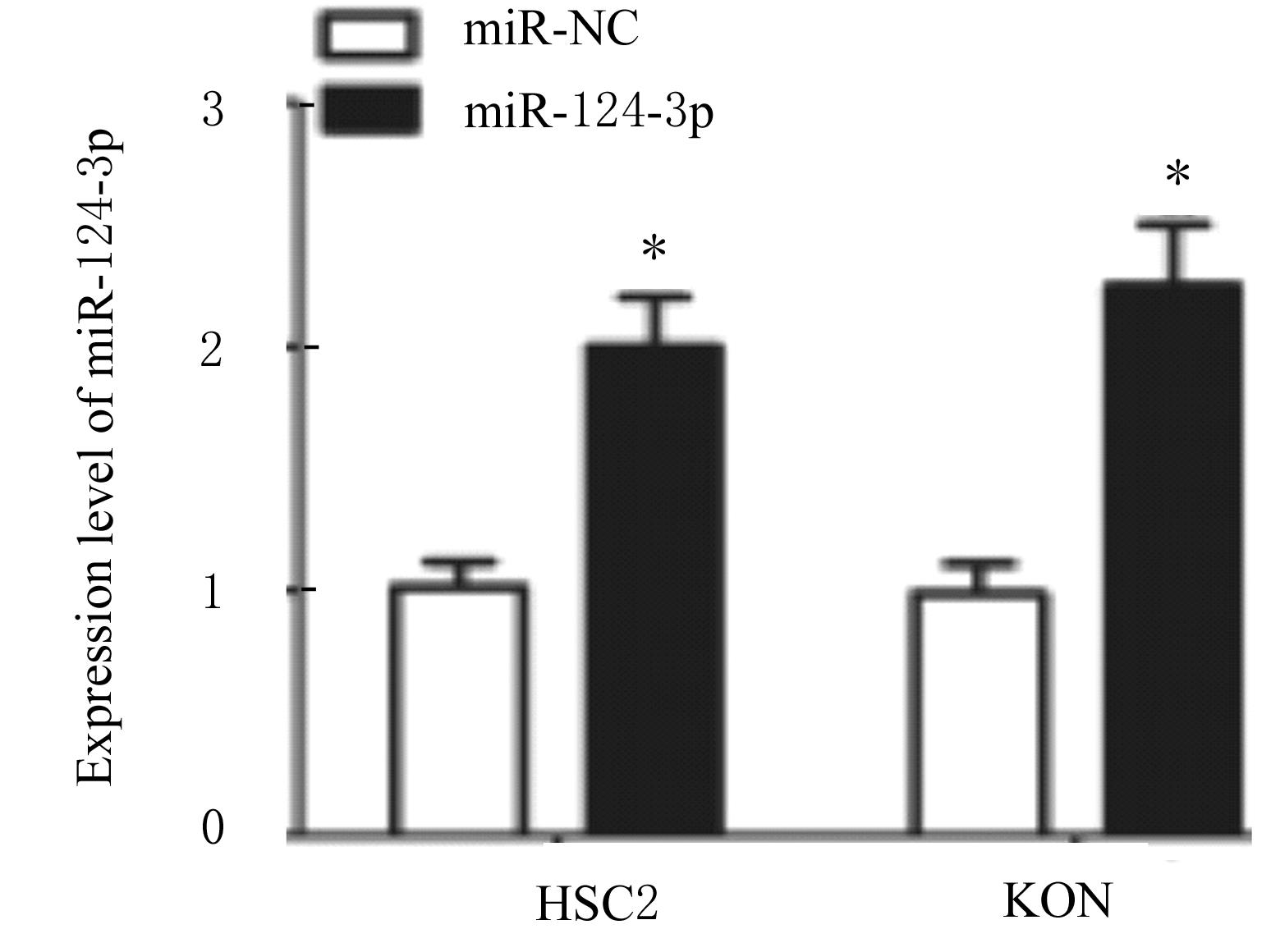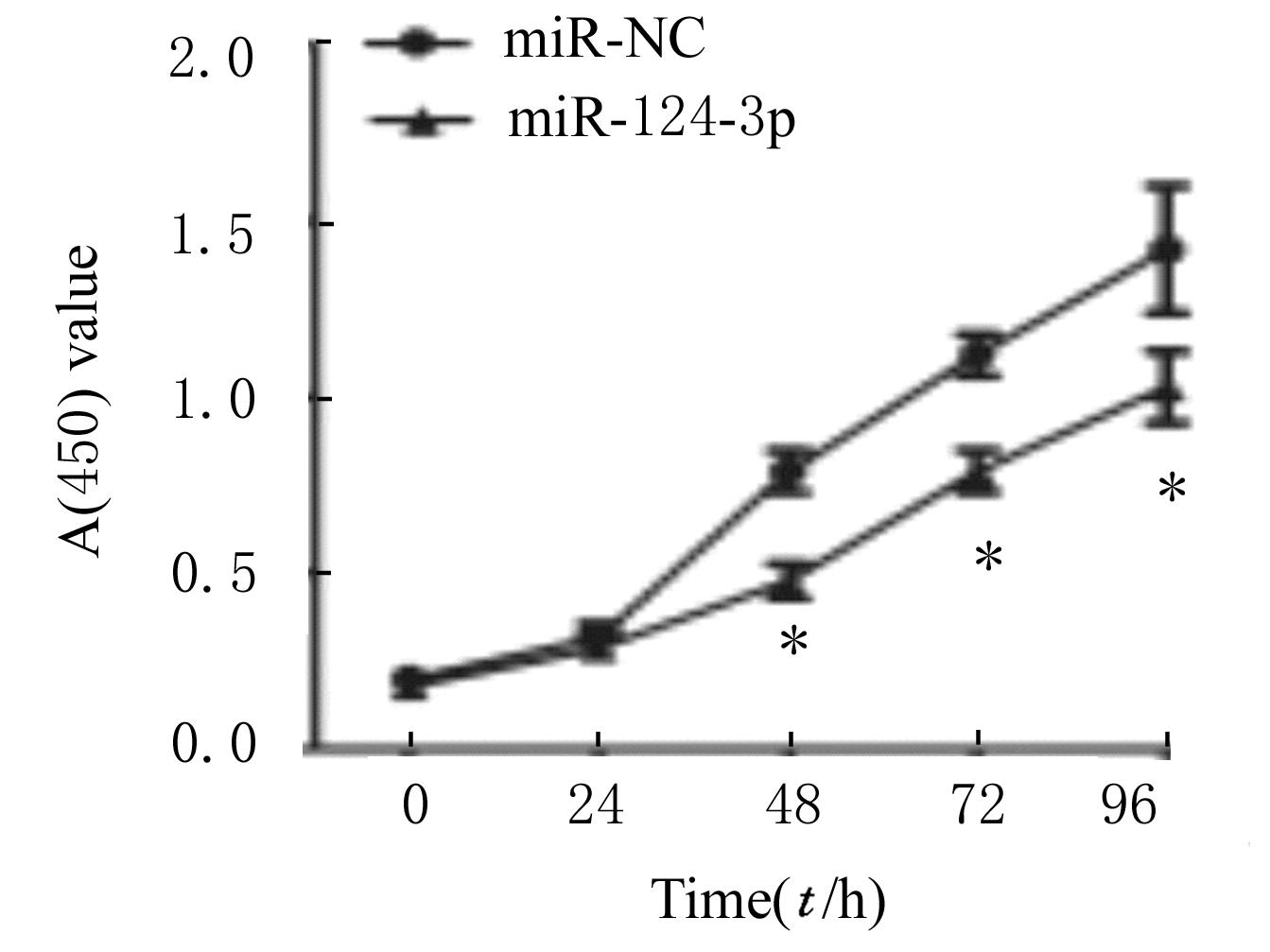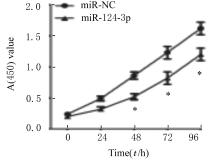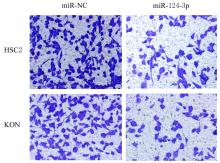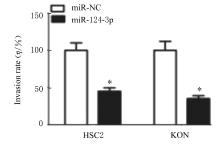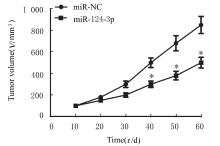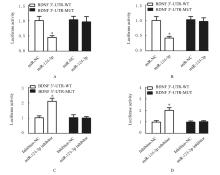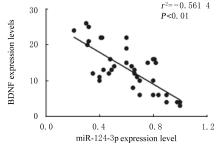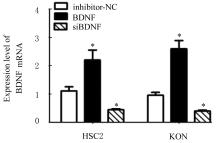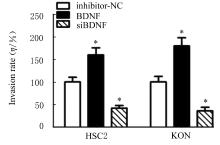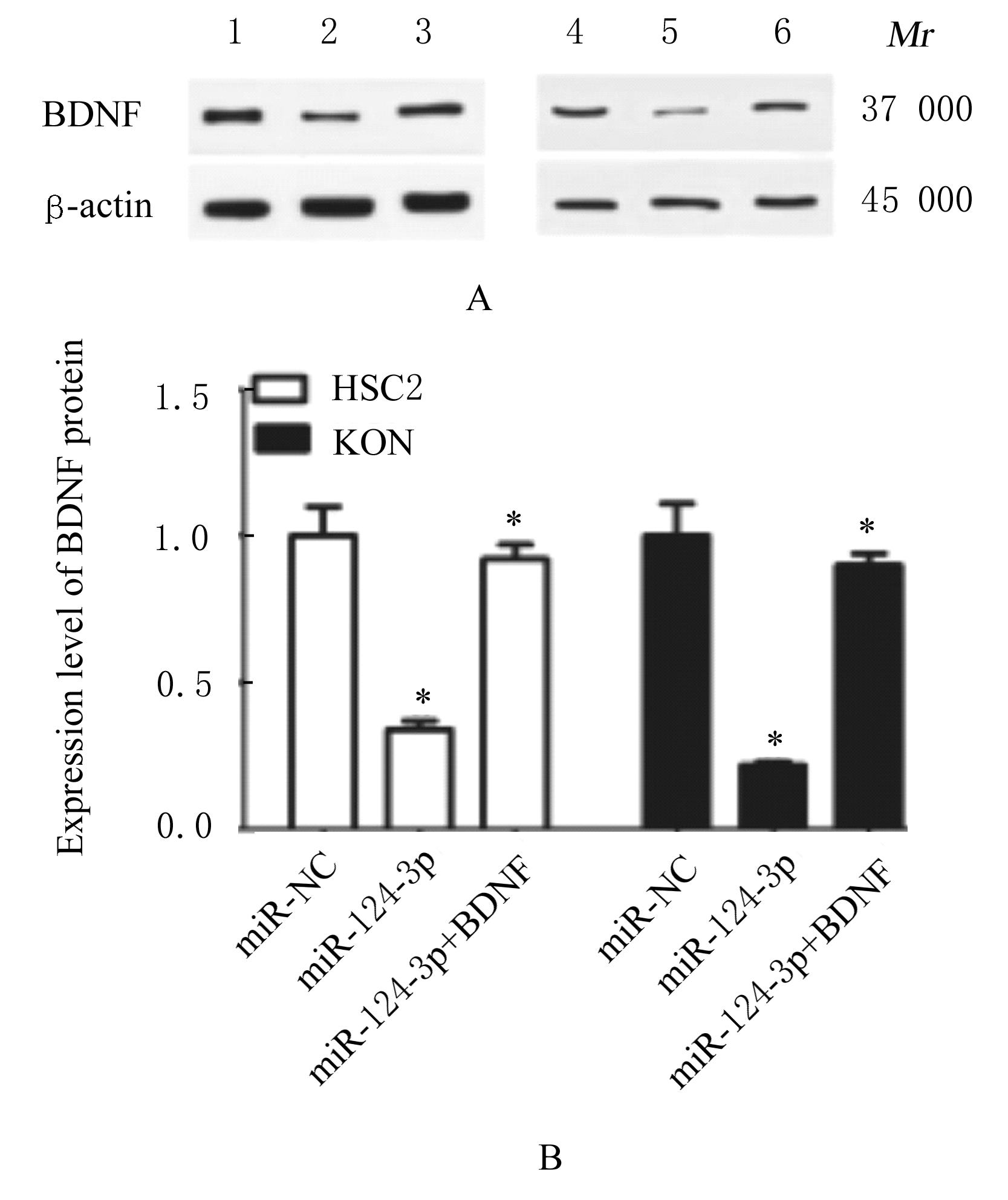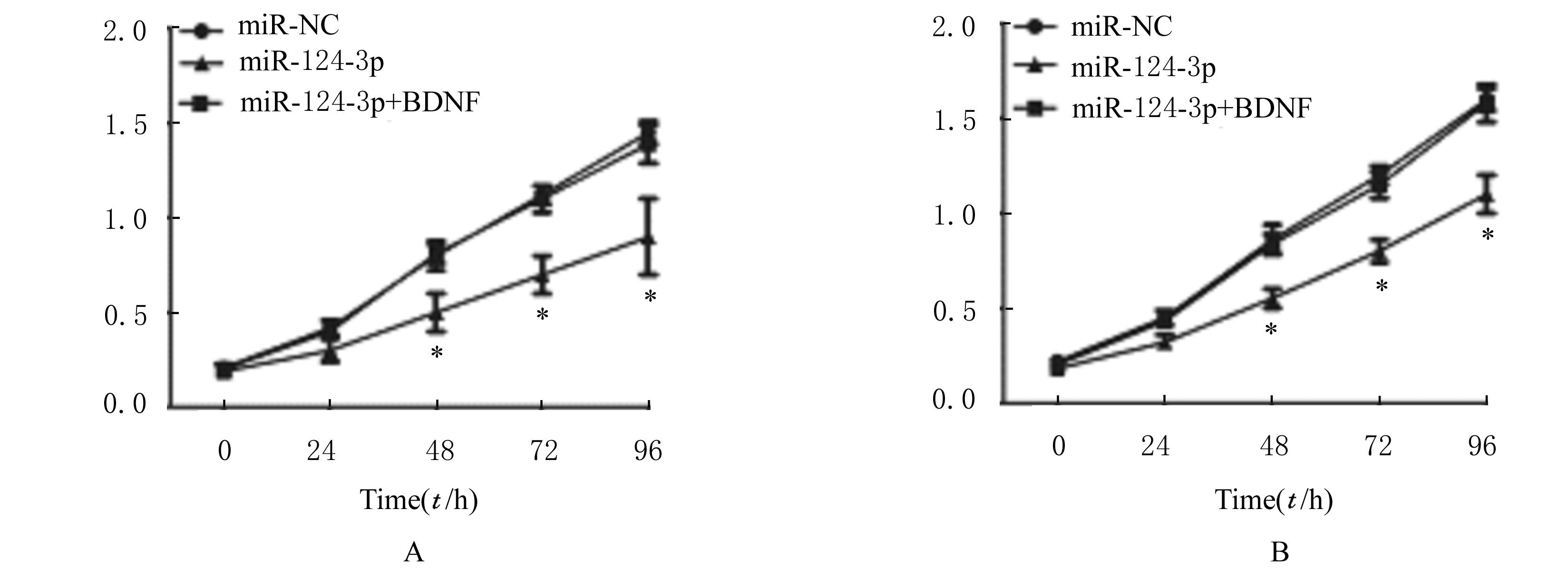吉林大学学报(医学版) ›› 2022, Vol. 48 ›› Issue (3): 718-727.doi: 10.13481/j.1671-587X.20220321
• 基础研究 • 上一篇
miR-124-3p对口腔鳞状细胞癌细胞增殖和侵袭的抑制作用及其机制
- 海南医学院第二附属医院口腔科,海南 海口 570100
Inhibitory effect of miR-124-3p on proliferation and invasion of oral squamous cell carcinoma cells and its mechanism
Zhuangzhi WU,Xiaoning HE( ),Siqi CHEN
),Siqi CHEN
- Department of Stomatology,Second Affiliated Hospital,Hainan Medical University,Haikou 570100,China
摘要: 观察微小RNA-124-3p(miR-124-3p)对口腔鳞癌(OSCC)HSC2和KON细胞增殖及侵袭的影响,并探讨其可能作用机制。 实时荧光定量PCR(RT-qPCR)法检测OSCC组织和OSCC细胞中miR-124-3p和脑源性神经生长因子(BDNF)mRNA表达水平,分析miR-124-3p表达与OSCC患者生存率的关系,裸鼠成瘤实验分析各组裸鼠体内成瘤的体积和质量,Western blotting法检测HSC2和KON细胞中BDNF蛋白表达水平。将miR-124-3p 、miR-NC、inhibitor-NC、miR-124-3p inhibitor、siBDNF、BDNF和miR-124-3p+BDNF分别转染至HSC2及KON细胞作为miR-124-3p组、miR-NC组、inhibitor-NC组、miR-124-3p inhibitor组、siBDNF组、BDNF组及miR-124-3p+BDNF组。CCK-8法检测HSC2和KON细胞的细胞存活率,Transwell实验检测各组HSC2和KON细胞的细胞侵袭率。双荧光素酶报告基因实验检测miR-124-3p与BDNF的靶向关系,RNA免疫沉淀实验检测miR-124-3p与BDNF的靶向关系。 OSCC组织、HSC2和KON细胞中miR-124-3p呈低表达,BDNF mRNA呈高表达,且miR-124-3p表达与OSCC患者生存率有关(P<0.05)。与miR-NC组比较,miR-124-3p组细胞存活率和细胞侵袭率降低(P<0.05),裸鼠肿瘤体积和质量降低(P<0.05)。与inhibitor-NC组比较,siBDNF组细胞存活率和细胞侵袭率降低(P<0.05)。与inhibitor-NC组比较,BDNF组细胞存活率和细胞侵袭率升高(P<0.05)。BDNF是miR-124-3p的潜在靶标。与miR-124-3p组比较,miR-124-3p+BDNF组细胞存活率和细胞率侵袭升高(P<0.05)。 miR-124-3p可抑制OSCC细胞的增殖和侵袭,其作用机制可能与靶向结合BDNF有关。
中图分类号:
- R739.85



